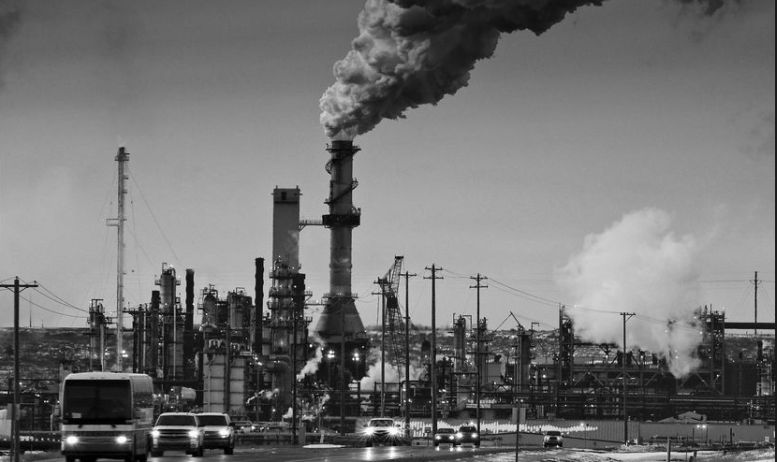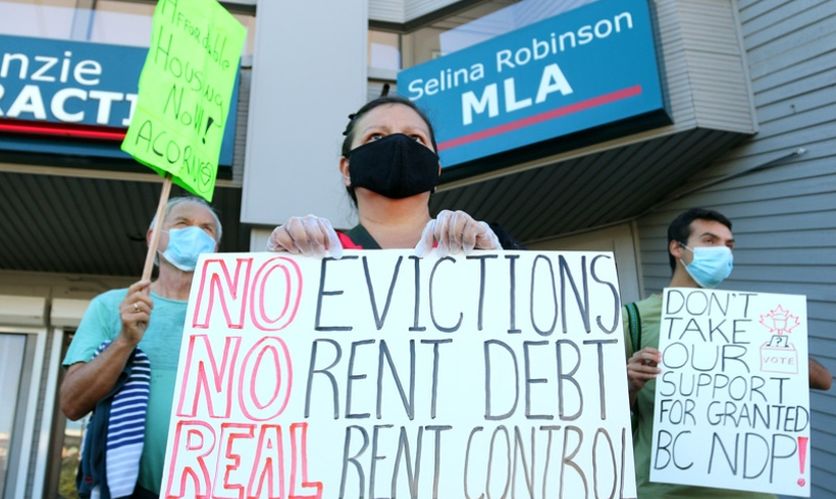“Axe the (carbon) tax” argues Pierre Poilievre. Given the source, one could be tempted to automatically respond, “keep the tax. Taxes are never popular but, along with death, they are said to be the only certainties in this world. So, what is the carbon tax? A carbon tax directly adds a surcharge on top of market prices for fossil fuels (oil, gas and coal) burned by households and small businesses. It is calculated based on the carbon dioxide released in burning. The aim is, as fossil fuels become more expensive, that consumers will switch to using electricity or reduce their use of fossil fuels.
The carbon tax is the most visible part of the Liberal government’s plans aimed at reducing the use of fossil fuels and so slowing down climate change. The most important policy is the large emitting trader systems that target the industries that release a lot of CO2 (put simply the industries have to reduce CO2 releases, buy offsets or pay fines) – such as producers of oil, gas, steel, and cement. Other policies include reducing the CO2 releases in the production of oil and gas, while not reducing the amount of oil and gas produced, reducing the release of methane, and the zero emission vehicle standards.
The tax was first introduced in Alberta in 2007 and across the country in 2018. It’s considered as revenue neutral, i.e., the revenues generated get returned to taxpayers. So is the carbon tax responsible for the increased price of heating oil and gas? Hardly – the real drivers for this are wars, profit-gouging oil and gas companies and the Organization of the Petroleum Exporting Countries (OPEC).
Oil companies
The oil companies “are generating massive profits that they return to their shareholders while charging consumers exorbitant prices. At the same time, they are demanding huge public subsidies to clean up the pollution they cause, while walking away from their already modest climate commitments.” These true words were spoken by Catherine MacKenna, former Liberal environment minister.
Pierre Poilievre is using the carbon tax to beat up on Trudeau and to come across as the defender of working families as they deal with inflation. The fact is the Conservative Party in the federal election campaigns of 2008 and 2021 featured carbon-pricing proposals – it fell to the Liberals to actually implement a national carbon tax. Of course, when you call your climate solution something that goes under the name of a tax, it plays into the hands of right-wing populism and climate skeptics. And when Exxon Mobil is in favour of the tax, you have to wonder.
Gift to Poilievre
In October 2023, Trudeau opened the gate to the undermining of his own tax when he announced an exemption to home heating oil. Although the exemption applies across the country, it happens to provide maximum help to Atlantic Canada where the Liberals are worried about losing their seats. This was a gift to Poilievre, enabling him to criticize Trudeau for making policy, not on environmental grounds, but on opportunist political ones. The Globe and Mail noted on November 2, “while the carbon tax lives on for now, it has been neutered, since no one can count on the certainty of the tax steadily rising.” Since then, the Conservatives have continued and will continue to frame the tax as a burden on Canadians. The price increased from $65 to $80 per tonne on April 1 (a roughly 25 percent increase) giving Poilievre and conservative Premiers of Alberta, Saskatchewan and Ontario an opportunity to again attack it. The Liberals plan to increase the tax by $15 a year until it reaches $170 a tonne by 2030.
A tax on carbon is not unique to Canada. For comparison, Uruguay has the highest carbon tax rate worldwide as of March 31, 2023, at nearly $US156 a tonne. Finland – the world’s first country to implement a carbon tax – has a rate of some $US84 a tonne.
Public attitudes
Even though the tax doesn’t financially penalize people, the public perception is largely negative. This is not surprising given that it’s billed as a tax and one that is going to increase every year. Again, unsurprisingly, a recent Leger poll found 69 percent of Canadians were opposed to the April 1 increase in the tax. In a lame attempt to deal with the unpopularity of the tax, the Federal government decided to rebrand its carbon tax rebate in an effort to make it clear to Canadians where the funds are coming from. Previously called the “Climate Action Incentive Payment,” the government announced that it will now be called the “Canada Carbon Rebate.” The phrase “putting lipstick on a pig” comes to mind. An earlier poll also found 42 percent of Canadians want the carbon price eliminated altogether. On the other hand, it also found a majority of Canadians want the federal government to do more to fight climate change: 30 percent of Canadians across income brackets are willing to pay more income tax for this purpose.
Meeting targets
Many environmentalists say “make the polluters pay,” which is correct. However, in many cases the polluters simply pass the costs on to consumers, rather than taking it out of corporate profits. Also, often the costs the polluters pay is generally not enough to make them change their polluting ways. Socialist Alternative believes the best way to get rid of pollution is through regulation and public ownership of the industries. People want to see action taken on the environment. However, they are skeptical of the government’s intentions.
While there is agreement that the Liberals’ polices will reduce CO2 emissions in Canada, none of the plans take into account the increased burning of fossil fuels exported by Canada. The Canadian Climate Institute, which is partially funded by the federal government, in a report of March 21, concludes that Canada is on track with cutting emissions by 2030. However it does point out that the most important actions are the large emitting trader systems, reducing the CO2 releases in the production of oil and gas, and reducing the release of methane and the zero emission vehicle standards. The carbon tax is estimated to contribute only between 8 and 14 percent of total reductions.
Canada’s commissioner of the environment is much less positive about the government’s plans, saying that Canada “is not on track to meet the 2030 target to reduce greenhouse gas emissions.” The CBC said of its November 2023 report that it ” painted a grim picture of emission reductions in Canada over the past 20 years, saying that the only significant drops in emissions came during the 2008 financial crisis and the COVID-19 pandemic, which had little to do with emissions reduction policy.” Climate Action Tracker rated the governments’ actions as “highly insufficient.”
Emissions trending upwards
It is certainly true that the carbon tax has some effect in reducing emissions. A 2015 British Columbia study found that the tax reduced greenhouse gas emissions by 5–15 percent while having negligible overall economic effects. On the same lines, one could argue that Canada’s progressive income tax system also marginally reduces income inequality. The point is that income inequality is increasing every year and that greenhouse gas emissions are also increasing. That’s capitalism for you. That emissions would be greater if were no carbon pricing is probably true but the upward trend in emissions shows that the carbon tax is not the best route to effective and timely reductions.
News about electricity power generation in Ontario reinforces this point. The Toronto Star reported in 2024 that “Ontario’s natural gas power plants were fired up more often last year than they have been in more than a decade, marking a significant regression from the province’s achievement of almost completely eliminating carbon emissions from the electricity system.” Natural gas has little to do with nature; it is mostly produced by environmentally damaging fracking and is mainly methane, a powerful greenhouse gas. Ontario, which as recently as 2017 boasted of a grid that was 96 percent non-emitting, is now only 87 percent carbon free. The right hand might be gaining something on the emissions front with the carbon tax but the left hand is taking all that away with, for example, what is happening with Ontario electricity or subsidies for the Trans Mountain pipeline. The left hand and right hand are not equally balanced.
The richest one percent
According to a November 2023 Oxfam report, the richest one percent (77 million people) were responsible for 16 percent of global consumption emissions in 2019 — more than all car and road transport emissions. The richest 10 percent accounted for half of emissions. It would take about 1,500 years for someone in the bottom 99 percent to produce as much carbon as the richest billionaires do in a year. Every year, the emissions of the richest one percent cancel out the carbon savings coming from nearly one million wind turbines. This shows that climate change is a class question, which demands a class and socialist response.
Oil Profits and Subsidies
Canada’s oil companies are making record profits, $63 billion in 2022. And they continue to get government subsidies, $18.6 billion in 2023 according to Environmental Defence. This over $80 billion would go a long way to actually tackle climate change. The carbon tax hopes to push people to change their actions and reduce the use of fossil fuels. But large parts of Canada have no reliable public transport and even the cities are woefully served, so people rely on vehicles. Insulating and installing heat pumps in a home would reduce energy use and save money in the long run but cost a lot of money upfront; there are some rebates available after the work is done. Renters have no control over the energy systems in their homes. A mass program of urban and rural public transport and upgrading homes would both tackle climate change and provide good jobs.
The other side is switching energy production from using fossil fuels to renewables. Briarpatch reported, “Back in 2003, the Ontario government committed to phasing out its use of coal-fired power plants to generate electricity. They didn’t bother with ‘market-based solutions,’ but just regulated coal out of existence. Electricity sector greenhouse gas emissions fell by an incredible 87 per cent between 2005 and 2015. It demonstrated that strong state intervention can make things happen, fast.”
Today, the fight against Big Oil is a bigger challenge than that taken on by Ontario in relation to coal. Humanity does not have the luxury of waiting for benevolent governments to do the job. The urgency is to build a powerful mass movement that will force governments to take the big polluters into public ownership, invest in renewable energy and energy savings and have a jobs program to guarantee good jobs for those displaced from fossil fuels. This is the path to protect the environment and meet human needs.




